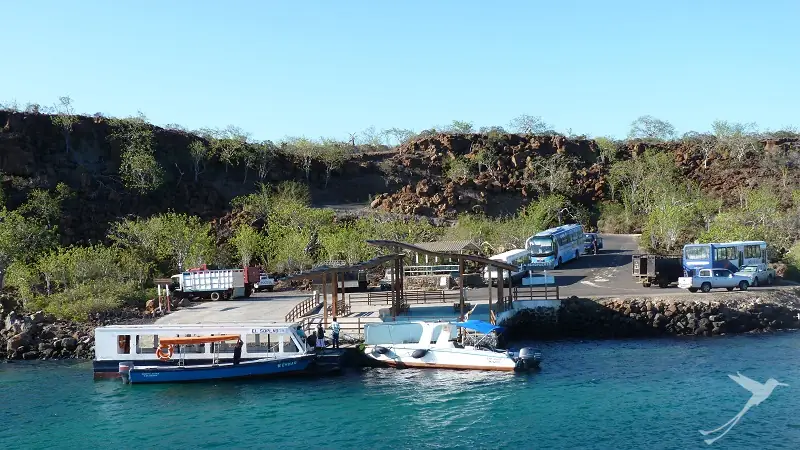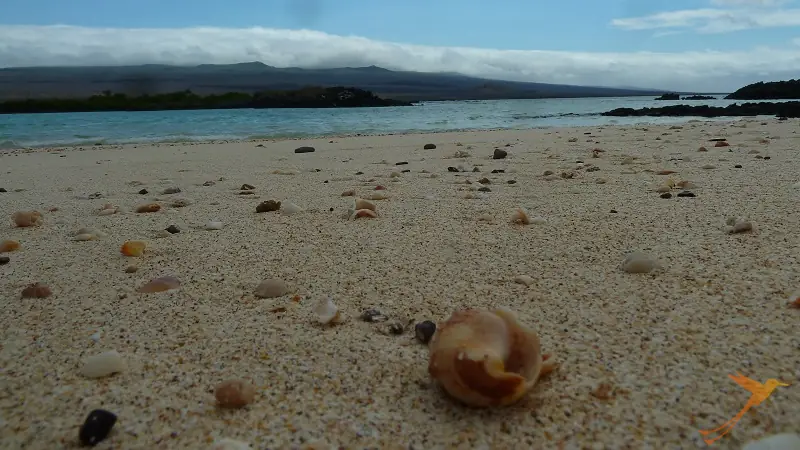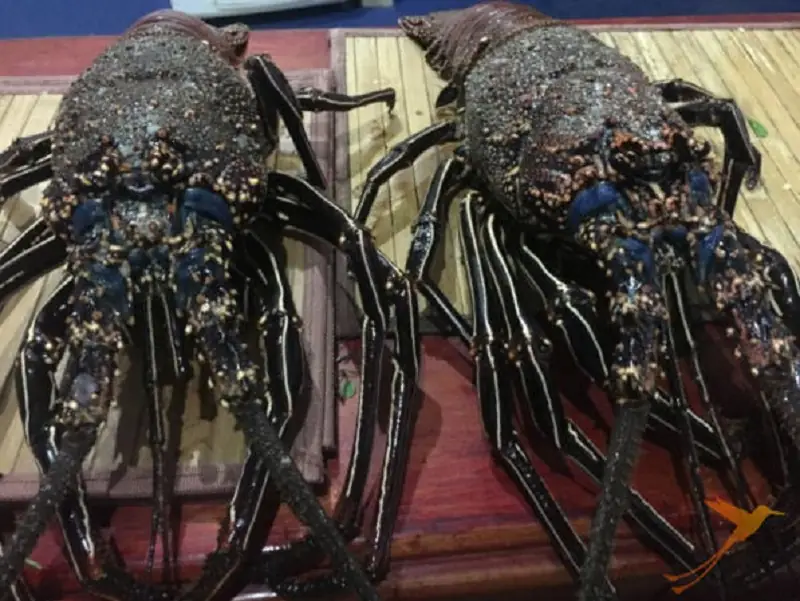
Swimming with turtles, sea lions and sharks, sun bathing on a beautiful secluded beach, eating fresh lobster and watching amazing sunsets – all in one day? That’s life on the Galapagos Islands. My last articles were about the experience I had on the three islands Santa Cruz, Isabela and San Cristóbal. This article is about all the information I gathered while I was there and useful tips and tricks to consider when visiting the archipelago.
Entrance fees
To enter the Galapagos Islands, you will have to pay two fees of $100 and $20. The $20 is for the Transit Control Card (TCT) and serves as a “visa” to the islands. You will have to register for it online. A step by step instruction can be found here. You will have to fill out which flights you’re taking and in which hotels you are going to stay. Here you can find the registration form. I had problems opening the page on a computer but it worked on my mobile phone. So if you should have any problems with it, try opening the page on a phone. Once you get to the airport of either Quito or Guayaquil, there will be a booth where you will pay the $20. They will give you a registration slip in return, which you have to hold on to until you leave the islands. If you lose it, they will charge you (again!). After you paid for the TCT your luggage will be checked for any products that are restricted to bring to the Galapagos (see Restricted and non permitted products on the Galapagos Islands). Then you go to the check in counter, drop off your luggage, go through security and board the airplane.
The $100 are the entrance fee to the Galapagos National Park and must be paid upon arrival. After landing you will walk into the airport, where they have counters for national citizens and foreigners. Here you will pay the entrance fee. Afterwards your carryon luggage will be checked for restricted product.
There is one more fee you will have to pay. If you enter the island of Isabela, you will be asked to pay 10$ upon arrival. After that, you will not be asked for any fees again.
Getting there and out
The only way to reach the Galapagos Islands is by airplane. There are two airports on the Galapagos Islands: One in Baltra, which is a small island north of Santa Cruz. The other airport is on San Cristóbal. Three airlines operate flights to the Galapagos from Quito and from Guayaquil: Tame, LATAM and Avianca. Tame is an airline that is operated by the Ecuadorian government, which has been known to be unreliable lately. I didn’t know that, so I booked with them. And surprise: My return flight was canceled and I had to stay on the islands two days longer – what a shame. But if you don’t have the extra time, you should book with LATAM or Avianca.
I flew from Quito with a quick stop in Guayaquil to Baltra. My flight didn’t go from Quito to Baltra directly, but I didn’t have to switch airplanes in Guayaquil and just remained seated.
Once you reach Baltra and paid the entrance fee, you will receive your luggage. A bus from your airline will take you to the channel between Baltra and Santa Cruz. That service is included. Once you reach the channel, you will take water taxi over to the island of Santa Cruz. It takes around 5 minutes to cross. You will be asked to pay $1 for the ride. Once you reach Santa Cruz, there will be public busses and taxis waiting. I took the bus to Puerto Ayora and it cost me $2. Once you’re in Puerto Ayora or any other town on any island, everything is walkable.
I flew out of San Cristóbal. I would recommend everyone to book a flight into one of the airports and the return flight out of the other airport. It might not even cost more and you safe time and money to transfer back to the island.
The airport in San Cristóbal is in walking distance from Puerto Baquerizo Moreno. After check-in you go through security, where you will be asked to show the registration slip you received after paying the $20 for the TCT. Then you wait in the waiting are, board your plane and your Galapagos adventure is over.

Restricted and not-permitted products on the Galapagos Islands
There are restricted and not-permitted products on the Galapagos Islands. When you check in at the airport, they check your main luggage. Upon arrival to the Galapagos, your carryon luggage will be checked. If you go from island to island they will also check your luggage when you check in for your boat.
Transport between the islands
There are boats going between Santa Cruz and Isabela and Santa Cruz and San Cristóbal. There is one in the morning and one in the afternoon. Tickets can be purchased for $30 in any tourism agency on the islands. You have to be at the pier 30 minutes prior to departure, sign in with your name and passport number and have your luggage checked. There are multiple boats leaving at the same time, so make sure you know the name of your boat. On Santa Cruz and Isabela, the ferries can’t dock at the pier, that is why you will take a water taxi from the pier to the boat, which costs either $0,5 on Isabela or $1 on Santa Cruz.
Land stay versus cruise
The most common way to visit the Galapagos Islands is by cruise. There are multiple cruise ships, with different routes, prices and standards, which you can book ahead of time. If you’re a little more spontaneous, don’t have a certain cruise in mind and have some extra time, there is also the possibility of booking a last minute cruise in one of the agencies, which is by far cheaper than booking in advance.
The other possibility for Galapagos is a land stay and booking day tours. Depending on how many of those day tours you do and what type of accommodation you chose, you can save a lot of money that way. I decided to stay on land, stayed in affordable hostels or hostales and booked three one day tours, which I already described in my last blog posts. Day tours can be booked in any of the agencies on all three islands. Depending on the season, they might be fully booked for the next days, but in the low season it wont’t be a problem to book a tour for the following day. One of the main reasons for staying on the islands instead of a boat is that the money you spend actually reaches the local community. The money you spend on the cruise ships mainly goes to the government. Another reason is that you can actually experience life on the Islands. If you’re on a cruise, you might visit the towns but you are only there for a couple of hours. You miss out on the delicious restaurants, meeting locals and also the night life.
If you’re still keen on doing a cruise (they do take you to other places which can’t be reached with day tours), my recommendation is to stay on the islands for a few days before or after the cruise.

Food and Drinks
You will find two course lunch options on every island. They include a soup, a main dish and a drink. You can, for example, get a shrimp soup, ceviche and a fresh juice. On Isabela and Santa Cruz they cost $5, on San Cristóbal only $4. For dinner you will find lobster, fish and sea food and hamburgers, also for $5. Of course, there are also higher priced options, with European or North American meals. My favorite spot to eat: Charles Binford Street on Santa Cruz. I had a favorite restaurant, whose name I sadly don’t remember, where I had dinner almost every night. They offered fresh tuna in ajillo sauce (garlic), shrimp or hamburgers/fish burgers for $5, and the portions were a lot. They also had cocktail happy hour with very good drinks.
One time we cooked our own lobster in the hostel kitchen. I got up early in the morning to go to the fish market – too early, the fishers had not come back yet. I watched them unload the lobsters, count and weigh them and then start selling them. It was a special experience for me, since I had never had lobster before. Having cooked it ourselves made it even more special.

Accommodation
There is a big variety of accommodation on the islands. Of course you will find luxurious hotels but there are also cheaper options. I paid $15 per night at every hostel I stayed in, which is the cheapest price you will find. On Santa Cruz, I can recommend Hostal Brattle, which has free water and two kitchens you can use. This is also the kitchen we used to cook our own fresh lobster. On Isabela I can recommend Posada del Caminante 2, which has an actual hostel vibe, with an outdoor kitchen, hammocks and free water, bananas and oranges.
Money
The currency in Ecuador is the US$. There are ATMs on Santa Cruz and San Cristóbal, but there are none on Isabela and most places charge up to 20% fees for credit card payments, so make sure you bring enough cash with you. The ATMs on Santa Cruz and San Cristóbal worked without problems.
Security
The islands are very safe and there is basically no crime. A good indicator: locals ride around on their bikes and never lock them, ever!
Time Zone
The time zone is UTC-6, so there is a one hour time difference to the mainland of Ecuador, which is in the UTC-5 time zone.
Season
The Galapagos Islands are located around the equator and are nice to visit all year around.
High and low season depend on vacation times in Europe and North America, rather than on the weather conditions. April and May and September and October are considered as low season. During the high season, prices rise and it may be hard to find availabilities for some tours.
The currents are different throughout the year. From June to September, the Humboldt Currents bring colder water, which also brings the dry season with blue skies and mid-day showers to the islands.
Another thing to be considered is the wildlife. Some animals, especially birds, have different habits throughout the year, such as breeding season. Marine life is also influenced by the cold or warm currents. Depending on what time of the year you will be here, there will be different things to see in the wildlife.
This is the last of my articles about the Galapagos. I hope you enjoyed reading them and got useful information about the Galapagos. If you have any further questions, don´t hesitate to send an e-mail to hello@soleq.travel or check out our Galapagos Tours .







